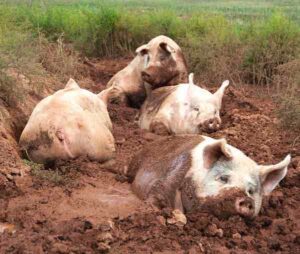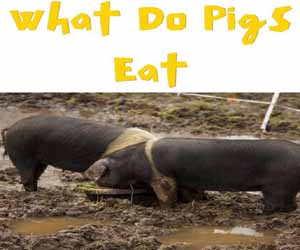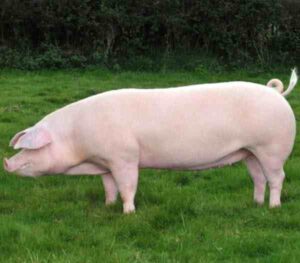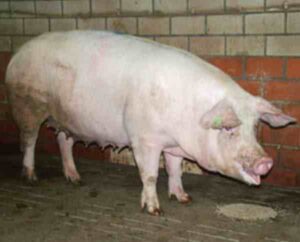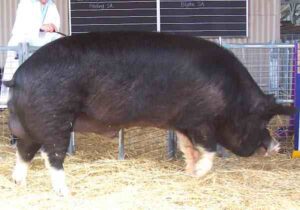The Essex pig is a beautiful breed of domestic pig originating in the United Kingdom. Like most other British pig breeds, the ancestor of the breed may have originated in the county of Essex from selective breeding of local wild pigs.
Previously the breed was originally a smallish, coarse, black and white animal which was noted for being easily managed and cheap to feed.
All these qualities ensured the popularity of the breed with smallholders. The old breed was deliberately improved in the mid 19th century by crossing with imported pig breeds.
Charles Western, 1st Baron Western obtained Neapolitan pigs to cross with his Essex sows while traveling in Italy in the early 19th century. One of his tenants, Fisher Hobbs, bred the resulting Neapolitan-Essex boars with his “coarse” Essex sows and established the Improved Essex.
The Essex pig breed remained popular locally until as recently as the mid-1950s. Total population of the breed had actually increased in numbers during the Second World Ward and immediately afterwards.
A breed society for the breed was formed in 1997 named ‘The Essex Pig Society‘. And since 1997 Jimmy Doherty and Michaela Furney of Jimmy’s Farm have made further efforts to publicise and re-establish the breed. Read some more information about the breed below.
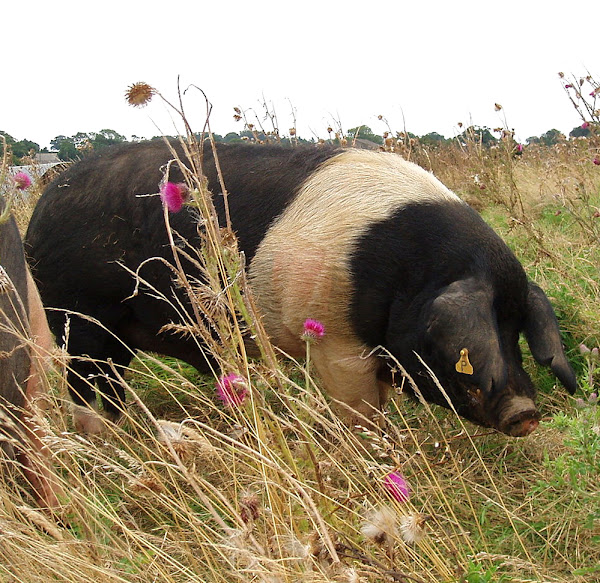
Essex Pig Characteristics
The Essex pig was relatively a small breed of pig in it’s traditional form. It has pricked ears and a black ground color with a broad band of white across the shoulders. Photo and information from Wikipedia.
Special Notes
The Essex pig breed has a reputation for hardiness and well known for it’s ability to feed itself by foraging. The animals are excellent foragers and well suited for the extensive pig farming system.
The breed was considered to have become extinct in 1967 for many years. But it was thought a few pure-bred animal might survive on small farms. However, review full breed profile of this breed in the following chart.
| Breed Name | Essex |
| Other Name | None |
| Special Notes | Hardy, excellent foragers, ability to feed itself by foraging, well suited for extensive system |
| Breed Size | Small |
| Climate Tolerance | Native climates |
| Coat Color | Black with a broad band of white across the smoulders |
| Rarity | Common |
| Country/Place of Origin | United Kingdom |
